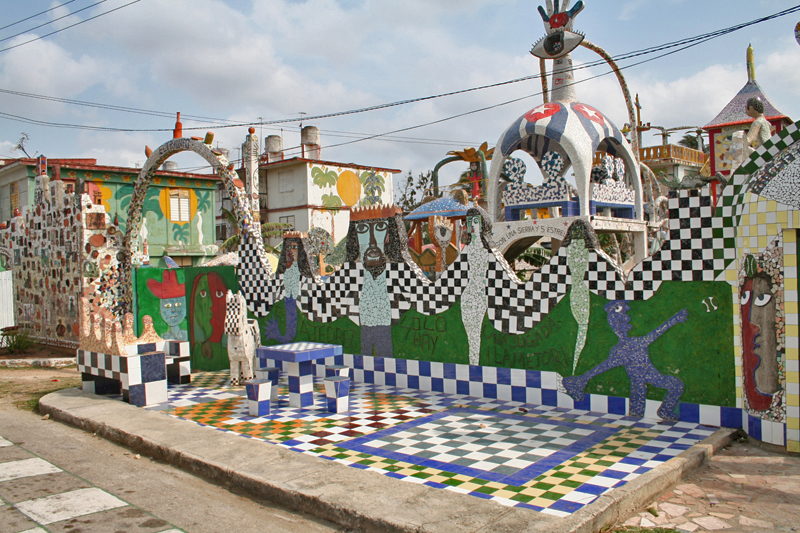Image source: Photograph in Fuster; José Fuster. Havana: Ediciones Unión, n.d., p. 15.
Marta Rojas on Fuster: Fuster is much more--in his way of seeing and assuming life, that is her very own art--than the twelve-year-old teenager who happened to be in Cuba on January 1, 1959, and who would be found, twenty-four months afterwards, in full campaign in the Sierra Maestra mountains, teaching peasants to read and write. At that time, a pencil was his combat weapon, a notebook his operations map, a lamp similar to Diogenes', illuminating others with knowledge. (Fuster., p. 11)
Fuster on Fuster : Throughout the four decades of my life as an artist, critics have clased me as a chronicler of my time. I disagree, because I think that an artist should reflect reality in his/her work. We, Cubans, have undergone tough times; but in spite of it all we have never lost "The Joy of Living," and this has always been the main subject in my work. (...) It was in 1996 that I decided to take my art to the streets with the aim of allowing people to take part in my project, and that is how I initiated my preliminary works in the community. At about this time my country was going through an extremely difficult economic juncture that was labeled the "Special Period." That phase affected my work because there was a shortage of construction materials, but in spite of it all I pushed on and took the decision to economically support all the expenditures. In my Community Project I work jointly with my neighbors, I make them accomplices of a sort in my Project: they contribute their ideas, tell me how they would like their houses' accesses to look, and I retain their criteria as a must in my work. (Fuster., pp. 22-23)
Fuster's Web site: Fuster quiquiriquí.


